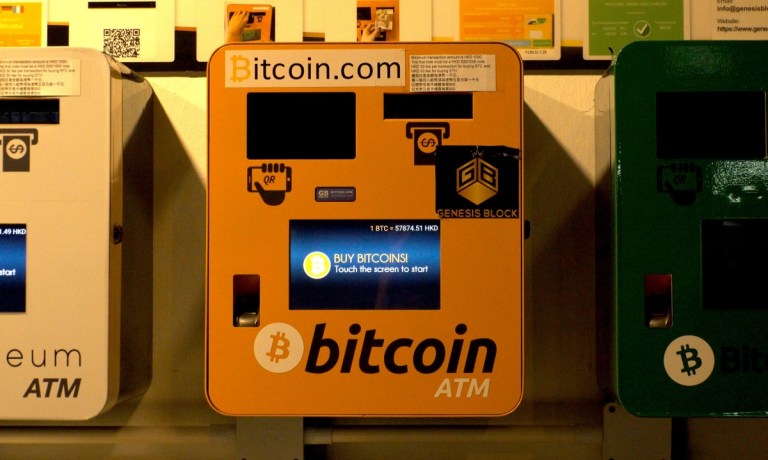Back in 2019, the crypto landscape was marked by several themes and trends that reflected the early stages of adoption, experimentation and regulatory uncertainty. Today’s digital asset landscape is more mature, with a focus on scaling, integration and mainstream acceptance.
Of course, regulatory uncertainty, the prevalence of scams, and the unmet promise of better, more scalable payments and digital commerce remain relatively constant pillars of the crypto space.
Two of the buzzier industry headlines this week underscore the sector’s growing pains: venture capital firm Andreessen Horowitz ditching its Miami office space, which was geared toward deploying crypto investments; and the hack of Donald Trump’s family members’ X accounts to promote a crypto scam.
And when it comes to the rest of the crypto and Web3 news PYMNTS has been tracking this week, those same themes stand out: regulatory uncertainty, scams, and the hunt for greater utility within payments.
Read more: Can Stablecoins Spark Crypto Adoption Across Retail and B2B Markets?
Advertisement: Scroll to Continue
Crypto Benefits vs Scams
For many years, the association of cryptocurrencies with scams, fraud and money laundering deterred institutional investors from entering the space. Even as the industry has evolved, the lingering perception of crypto as a Wild West has made some institutions cautious about adoption.
The decentralized, pseudonymous nature of blockchain technology, while offering many benefits, also makes it an attractive target for fraudsters and scammers.
Highlighting this, the FBI on Tuesday (Sept. 3) issued a warning that North Korean hacking groups are “conducting highly tailored, difficult-to-detect social engineering campaigns against employees of decentralized finance (DeFi), cryptocurrency, and similar businesses to deploy malware and steal company cryptocurrency.”
And as bitcoin ATMs have been installed in more locations, they have become a “payment portal for scammers,” the Federal Trade Commission (FTC) said in its own Tuesday data spotlight, which revealed that this year’s reported bitcoin ATM fraud losses through June have already amounted to $66 million.
The FTC added that this amount probably reflects only a fraction of the total losses, because most frauds are not reported.
The prevalence of scams has drawn the attention of regulators worldwide, leading to increased scrutiny.
The U.S. House Financial Services Committee (HFSC) will hold a hearing on DeFi titled, “Decoding DeFi: Breaking Down the Future of Decentralized Finance,” next Tuesday (Sept. 10).
At the same time, PYMNTS reported over the weekend (Sept. 1) that lawmakers have said any sort of crypto bill passage in 2024 would be a “long shot.”
Crypto’s Promise Within Payments
It’s old news by now to say so, but adherents believe that cryptocurrencies have the potential to revolutionize the payments landscape by offering unique benefits such as speed, lower costs and increased accessibility.
Against that backdrop, Coinbase said it has seen its first-ever “AI [artificial intelligence] to AI” crypto transaction. In a post on X Friday (Aug. 30), CEO Brian Armstrong said the cryptocurrency exchange had overseen its inaugural transaction between two AI agents.
“AI agents cannot get bank accounts, but they can get crypto wallets. They can now use USDC on Base to transact with humans, merchants, or other AIs. Those transactions are instant, global, and free,” Armstrong said.
Elsewhere, Wirex has launched its mainnet, making its decentralized payment method, Wirex Pay, live and ready to use. This blockchain-based payment method allows users to make transactions using cryptocurrencies at more than 80 million merchants in more than 200 countries, the company said Aug. 28.
This news comes about a month after Wirex and Visa teamed up to promote the use of digital currencies in Europe and the United Kingdom, saying their collaboration will “explore new opportunities to leverage and integrate innovative Visa cards and reduce friction in payment experiences.”
And the emergence of stablecoins and other, less-volatile digital asset mechanisms are being held up as a way to bridge the gap between the traditional financial system and the world of crypto, paving the way for broader acceptance and integration of digital currencies into the global economy.
In that vein, Bridge has raised $40 million to support its efforts to build a stablecoin-based payments platform designed to simplify global money movement, bringing the total amount the company has raised to $58 million. Bridge aims to create infrastructure that builders can use to take advantage of the ability of stablecoins to transform and improve global money movement.
Observers are wondering whether stablecoins might serve as the best onramp for users to enter the digital asset space, PYMNTS reported Aug. 26. Stablecoins can be integrated into existing digital wallets, making them easy to use for those already familiar with mobile payments.
PYMNTS also examined the future of cryptocurrency as a payment method last week, noting that in spite of substantial growth in crypto wealth, there are still major hurdles surrounding utility and scalability. The volatility of digital assets can ultimately make them less appealing as a stable medium of exchange.

